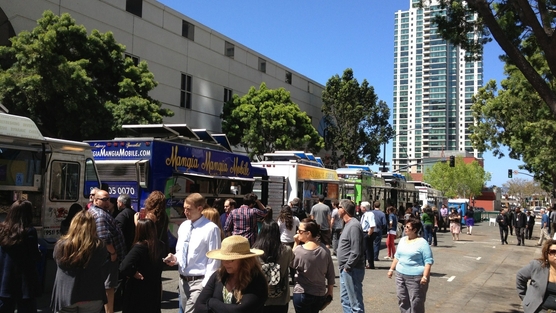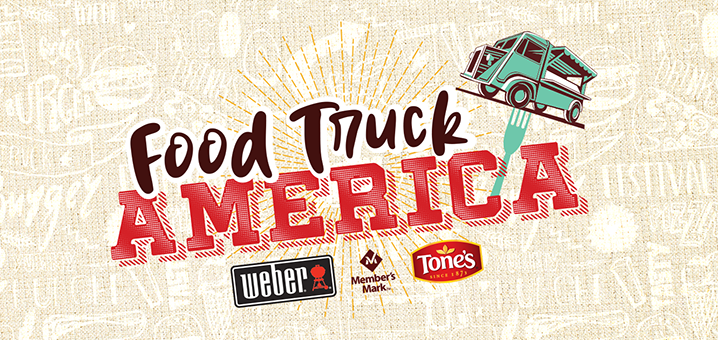SAN DIEGO, CA – New regulations that aim to accelerate expansion of San Diego’s growing gourmet food truck industry will take effect next week after many months of debate and delays.
The regulations loosen several restrictions and clear up many gray areas that have frustrated food truck operators and city officials since the trendy gourmet trucks began popping up in San Diego a few years ago.
The rules also include a controversial ban on the trucks in parts of Little Italy, the Gaslamp Quarter and areas within a few blocks of the city’s beaches.
Food truck operators say those bans are the city trying to protect traditional restaurants who complain the trucks create unfair competition and threaten their survival.
City officials say those bans are based instead on safety concerns, contending the trucks endanger pedestrians and drivers in congested areas by blocking sight lines. They also note that the banned areas make up only about 5 percent of the city.
Despite frustration about the banned areas and some other details, the local food truck community praised the new rules Wednesday as a long-awaited positive step.
“It’s the polar opposite of what we had before, which was very gray,” said Christian Murcia, who operates two gourmet trucks and coordinates several local food truck gatherings. “We were all frustrated because no one knew what the rules were. The new set of regulations makes things very clear.”
In addition to clarity, the rules allow the trucks to operate on private property, which was previously prohibited except for catered events, and permit the trucks to operate on city streets except in the banned areas and neighborhoods dominated by single-family homes.
The rules are a solid compromise between the flexibility the food truck industry wants and the kind of restrictions sought by traditional restaurants and other critics, said Matt Geller, president of the Southern California Mobile Food Vendors Association.
“It’s not overly restrictive and it’s not overly food-truck friendly,” said Geller, contending that onerous restrictions would have made the city vulnerable to litigation. “It’s right in the middle.”
Geller said he hopes the banned areas, which also include neighborhoods surrounding San Diego State, University of San Diego and UC San Diego, will be eliminated a year from now when the city is scheduled to evaluate the effectiveness of the ordinance, which will take effect next Wednesday .
Restaurant owners in the affected neighborhoods say the trucks should face restrictions because they have much lower overhead and don’t pay merchant fees required of stationary restaurants and other businesses.
Geller said that’s a shortsighted approach, contending unfettered access would allow food trucks to bolster San Diego’s food scene, especially in the Gaslamp.
Find the entire article at utsandiego.com <here>




